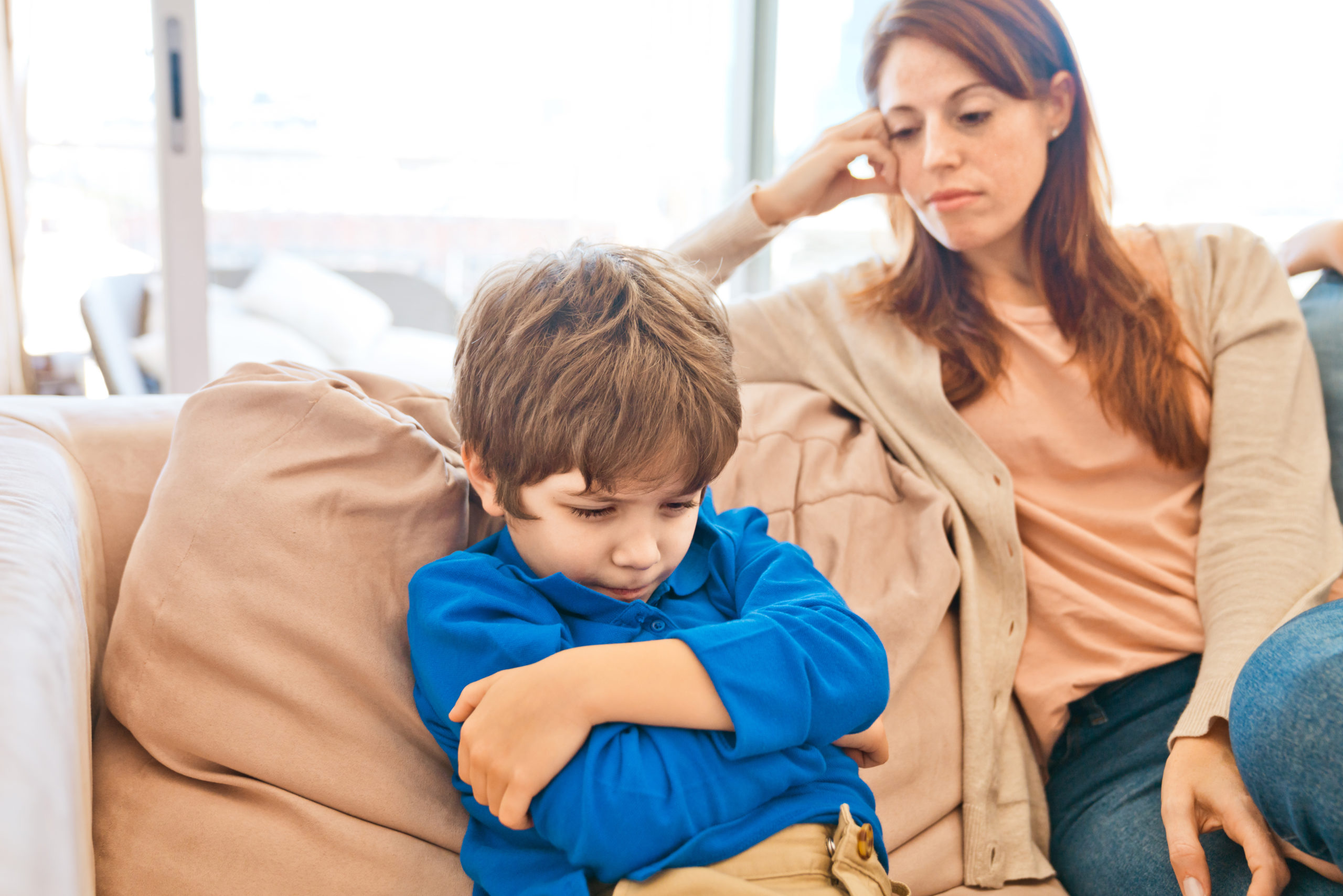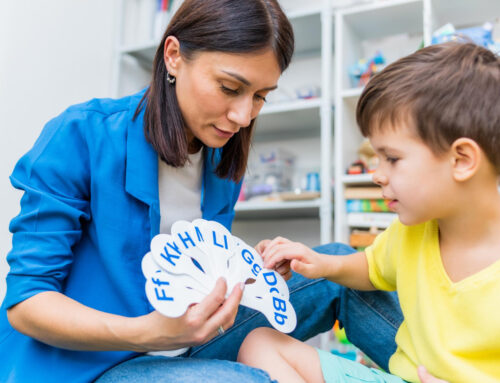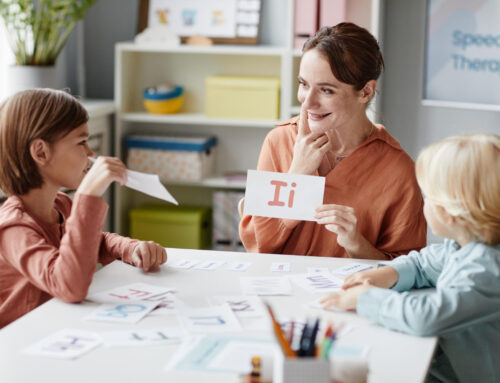Welcome to Theracare Pediatric Services‘ comprehensive guide on expressive language disorder. This blog post will delve into the definition, symptoms & prevalence of expressive language disorder in children.
We will explore the various factors contributing to this condition, including genetics, environmental factors, trauma & neurological disorders. We will also discuss effective treatment options, such as speech therapy, behavioral therapy & medication.
Throughout this post, we will emphasize the crucial role of parents & caregivers in supporting their child’s progress & providing a positive outlook on the potential for a fulfilling life with early intervention.
Understanding Expressive Language Disorder
Expressive language disorder (ELD) is a communication disorder that affects a child’s ability to express themselves verbally. It is characterized by difficulties producing age-appropriate speech, using proper grammar & vocabulary & organizing thoughts coherently.
Children with ELD often struggle to communicate their needs, thoughts & ideas effectively, impacting their social interactions, academic performance & self-esteem.
Symptoms Of Expressive Language Disorder

Displeased son sitting with arms crossed on sofa at home. Worried mother looking at her child. Focus on boy.
The symptoms of expressive language disorder can manifest differently in each child. Common signs & symptoms include:
- Limited Vocabulary:
Children with ELD may have a smaller vocabulary than their peers of the same age, struggling to find the right words or often using general terms.
- Difficulty Constructing Sentences:
They may need help forming grammatically correct sentences, omitting words, or using incorrect verb tenses.
- Lack Of Coherence:
Expressive language disorder can lead to difficulty organizing thoughts & ideas, resulting in incoherent or disjointed speech.
- Reduced Verbal Expression:
Children with ELD may have limited verbal output, using shorter phrases or sentences than their peers.
- Frustration & Emotional Challenges:
The struggle to express themselves adequately can lead to frustration, anxiety & social withdrawal.
Prevalence Of Expressive Language Disorder
Expressive language disorder is one of the most common communication disorders in children. According to the American Speech-Language-Hearing Association (ASHA), it affects approximately 3 to 10 percent of preschool-aged children.
The disorder is more prevalent in boys than girls. It often co-occurs with conditions like specific language impairment & developmental delays.
Factors Contributing To Expressive Language Disorder
- Genetics:
Research suggests that genetic factors play a role in developing expressive language disorder. Specific genes associated with language & communication skills may contribute to the disorder’s onset.
- Environmental factors:
Environmental factors, such as limited exposure to language-rich environments, neglect, or abuse, can hinder language development & contribute to expressive language disorder.
- Trauma:
Traumatic experiences, such as physical or emotional abuse, neglect, or witnessing violence, can significantly impact a child’s language development & contribute to expressive language disorder.
- Neurological disorders:
Some neurological conditions, including autism spectrum disorder, attention deficit hyperactivity disorder (ADHD) & intellectual disabilities, are associated with expressive language disorder.
Treatment Options For Expressive Language Disorder

Fortunately, several treatment options can help children with expressive language disorder improve their communication skills & overcome the challenges they face. Some of them are:
- Speech Therapy:
Speech therapy is often the primary intervention for children with expressive language disorder. A speech-language pathologist (SLP) works closely with the child to address specific communication goals. Therapy sessions may focus on improving vocabulary, sentence formation & overall language organization.
SLPs use various techniques, such as modeling correct speech, providing visual aids & engaging in interactive activities to enhance the child’s expressive language skills.
- Behavioral Therapy:
In addition to speech therapy, behavioral interventions can complement the treatment of expressive language disorder. Behavioral therapy techniques, such as Applied Behavior Analysis (ABA), can help children develop appropriate communication behaviors & reinforce positive language skills.
These therapies focus on rewarding desired behaviors, teaching social interaction skills & reducing challenging behaviors that may hinder communication.
- Medication:
While medication does not directly treat expressive language disorder, it can be beneficial in managing co-occurring conditions that may contribute to language difficulties, such as ADHD or anxiety disorders.
In some cases, medication prescribed by a qualified healthcare professional can improve attention span, reduce impulsivity & enhance overall focus, indirectly supporting the child’s progress in speech therapy & communication skills.
The Role Of Parents & Caregivers
Parents & caregivers play a vital role in supporting children with expressive language disorder. Here are some strategies that can foster effective communication & overall progress:
- Create A Supportive Home Environment:
A nurturing & language-rich environment is crucial for a child’s development. Engage in regular conversations, read aloud together & encourage open communication.
Create a safe space where the child feels comfortable expressing their thoughts & ideas.
- Practice Communication Exercises:
Incorporate daily communication exercises into the child’s routine. These exercises can include storytelling, role-playing & conversations about their interests & experiences.
Practice patience & active listening, allowing the child ample time to express themselves.
- Collaborate With Healthcare Professionals:
Maintain open communication with the child’s speech-language pathologist & other healthcare professionals involved in their care.
Collaborate on treatment goals, follow their recommendations & ask for guidance to support the child’s progress at home.
Conclusion

Educational pastime develop creativity skill in kid concept. Asian mother her small daughter lying on warm wooden floor in sunny cozy living room, mom teach girl paint use album and colourful pencils
Expressive language disorder can challenge children’s ability to communicate effectively. However, with early intervention & appropriate treatment options, children with ELD can progress significantly & lead fulfilling lives. When necessary, speech therapy, behavioral therapy & medication can help improve communication skills, boost self-esteem & enhance social interactions.
Remember, as parents & caregivers, your love, support & active participation are invaluable in helping children overcome expressive language disorders & reach their full potential. By fostering a supportive environment & collaborating with healthcare professionals, you set the stage for their success.
Children with an expressive language disorder can thrive & communicate confidently in all aspects of their lives with proper intervention & dedication.
Get The Support You Need To Navigate (ELD) With Confidence
If you suspect your child has Expressive Language Disorder or may have it, come to Theracare Pediatric Services. We specialize in providing a customized treatment plan that considers your family’s needs & allows your child to live life to its fullest.
Our team consists of professionals trained to help you navigate every step of the process & ensure that any roadblocks encountered can be addressed effectively.
Whether finding good support groups or correctly processing emotions related to Expressive Language Disorder, we’re here to help you every step of the way.
Together, let’s explore the extensive resources available & take action on what works best for you!
Top Frequently Asked Questions
-
How Common Is Expressive Language Disorder?
Expressive language disorder is one of the most common communication disorders in children. It is estimated to affect approximately 3 to 10 percent of preschool-aged children, according to the American Speech-Language-Hearing Association (ASHA).
-
Can Expressive Language Disorder Coexist With Other Conditions?
Yes, expressive language disorder can coexist with other conditions, such as specific language impairment, developmental delays, autism spectrum disorder, attention deficit hyperactivity disorder (ADHD) & intellectual disabilities.
-
Can Expressive Language Disorder Be Cured?
Expressive language disorder cannot be “cured” in the traditional sense since it is a lifelong condition. However, with early intervention & appropriate treatment, children can substantially improve their expressive language skills & successfully manage their communication difficulties.
-
How Long Does Treatment For Expressive Language Disorder Last?
The duration of treatment for expressive language disorder varies depending on the child’s needs & progress. It may range from a few months to several years. Regular assessment & ongoing therapy adjustments are essential to ensure the most effective treatment plan.
-
Can Expressive Language Disorder Affect Academic Performance?
Yes, expressive language disorder can impact a child’s academic performance, hindering their ability to effectively communicate their thoughts & ideas. Difficulties in language expression can affect reading, writing & comprehension skills.
-
Are There Any Self-help Strategies For Parents To Support A Child With Expressive Language Disorder?
Parents can create a supportive home environment by engaging in regular conversations, reading aloud together & encouraging open communication. They can also practice communication exercises like storytelling, role-playing & actively listening to the child’s thoughts & ideas.
-
Can Expressive Language Disorder Improve Without Treatment?
Expressive language disorder typically requires intervention for significant improvement. While some children may show spontaneous improvement over time, it is generally recommended to seek appropriate treatment to enhance their communication skills & overall well-being.
-
Can Adults Have Expressive Language Disorder?
While expressive language disorder is most commonly diagnosed in children, it can persist into adulthood. Some individuals may continue to experience difficulties in expressive language despite reaching adulthood. In such cases, seeking professional help is advisable.
-
Can Expressive Language Disorder Be Mistaken For Shyness Or Introversion?
Expressive language disorder can sometimes be mistaken for shyness or introversion because individuals with the disorder may exhibit limited verbal expression or social withdrawal. However, consulting with a healthcare professional for an accurate diagnosis & appropriate intervention is essential.
-
Is There A Link Between Expressive Language Disorder & Intelligence?
Expressive language disorder is not directly related to intelligence. A child with an expressive language disorder can have average or above-average intelligence but struggle with verbal expression. The disorder explicitly affects the ability to communicate thoughts & ideas effectively, regardless of intellectual capabilities.
-
Can Technology Or Assistive Devices Help Individuals With An Expressive Language Disorder?
Yes, technology & assistive devices can benefit individuals with expressive language disorder. Augmentative & alternative communication (AAC) tools, such as speech-generating devices or communication apps, can assist in communication & language development.
-
Can Expressive Language Disorder Improve Over Time?
Children with expressive language disorder can improve their communication skills with appropriate intervention & support. Early intervention & consistent therapy can improve outcomes & help individuals with expressive language disorder thrive personally & academically.





